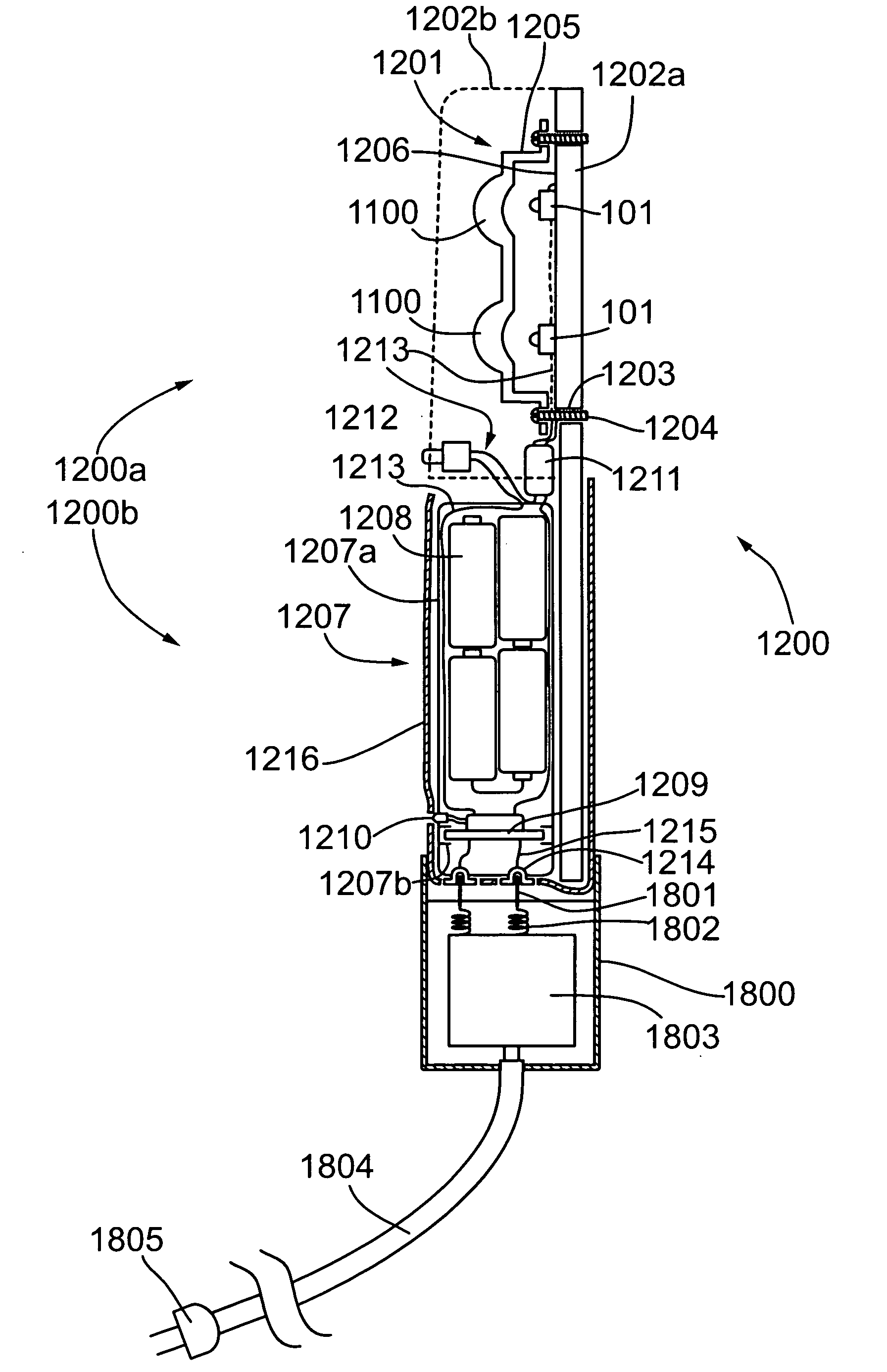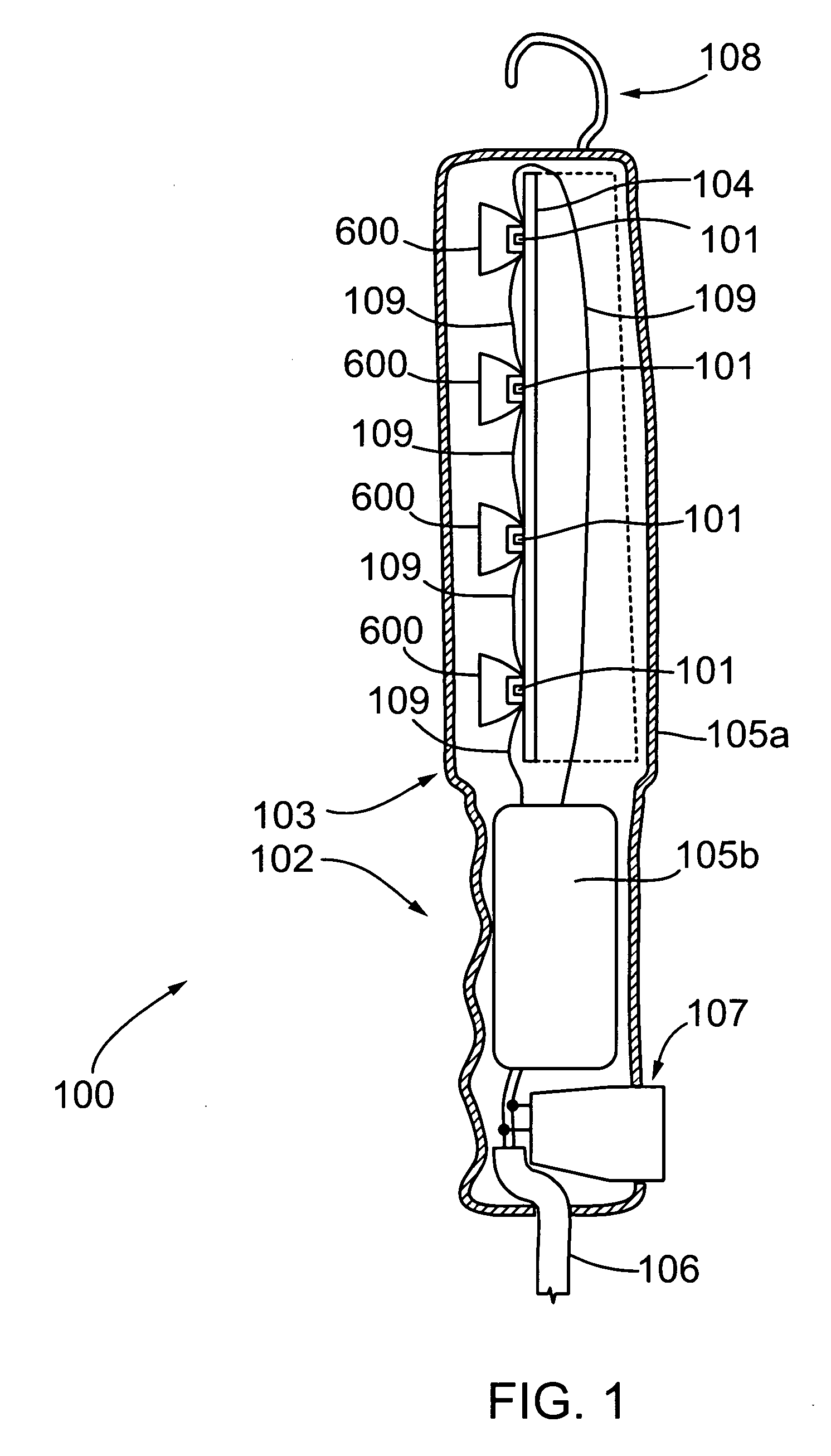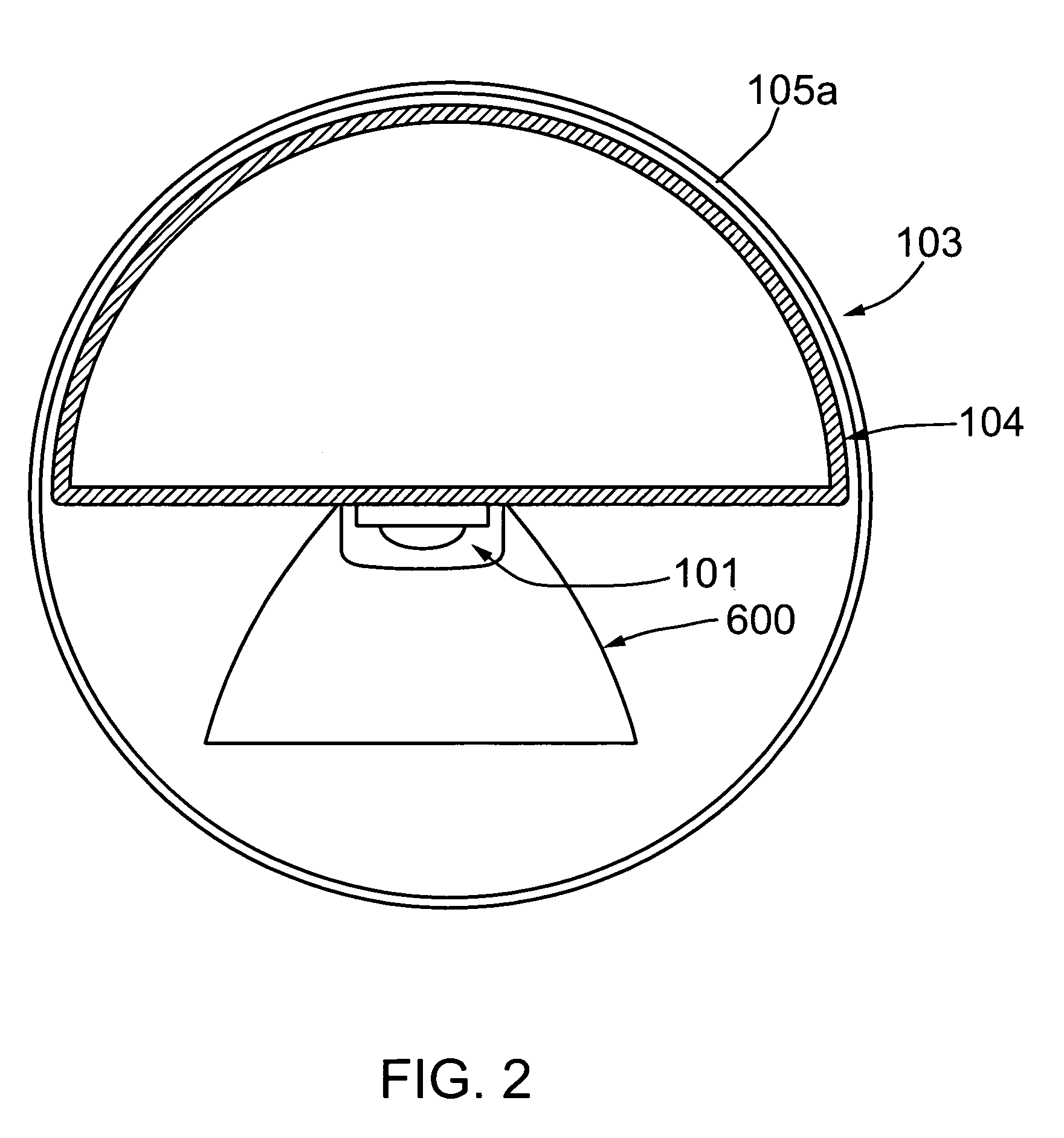LED work light
a technology for led work lights and led filaments, applied in the field of led work lights, can solve the problems of fluorescent work lights that can experience the breakage of their bulbs, the bulb or its filaments are broken, so as to preserve the useful working life of led bulbs, save power, and save the effect of working li
- Summary
- Abstract
- Description
- Claims
- Application Information
AI Technical Summary
Benefits of technology
Problems solved by technology
Method used
Image
Examples
Embodiment Construction
[0100]Referring to FIGS. 1 and 2, a work light 100 has a handle 102 and a light head 103 that houses an LED heatsink 104. The LED heatsink 104 has LEDs 101 mounted on it. The LED heatsink 104 as shown is in the shape of a semicircular tube, which may or may not be constructed of a single piece of metal. The semicircular shape (best evident in FIG. 2) permits the heatsink 104 to be in contact with or very close to the structural material of the light head 102 so that heat can more easily escape into the environment through the structural material of the light head 102. Alternatively, the heatsink 104 may be of a different shape or more than one heatsink may be used.
[0101]The handle 102 and the light head 103 may be comprised in a single outer casing 105a. Such a single outer casing 105a may be tubular in shape and made of transparent plastic such as acrylic or polycarbonate. Such a tubular outer casing 105a may have a semicircular tube shaped version of the heatsink 104 contained in ...
PUM
 Login to View More
Login to View More Abstract
Description
Claims
Application Information
 Login to View More
Login to View More - R&D
- Intellectual Property
- Life Sciences
- Materials
- Tech Scout
- Unparalleled Data Quality
- Higher Quality Content
- 60% Fewer Hallucinations
Browse by: Latest US Patents, China's latest patents, Technical Efficacy Thesaurus, Application Domain, Technology Topic, Popular Technical Reports.
© 2025 PatSnap. All rights reserved.Legal|Privacy policy|Modern Slavery Act Transparency Statement|Sitemap|About US| Contact US: help@patsnap.com



